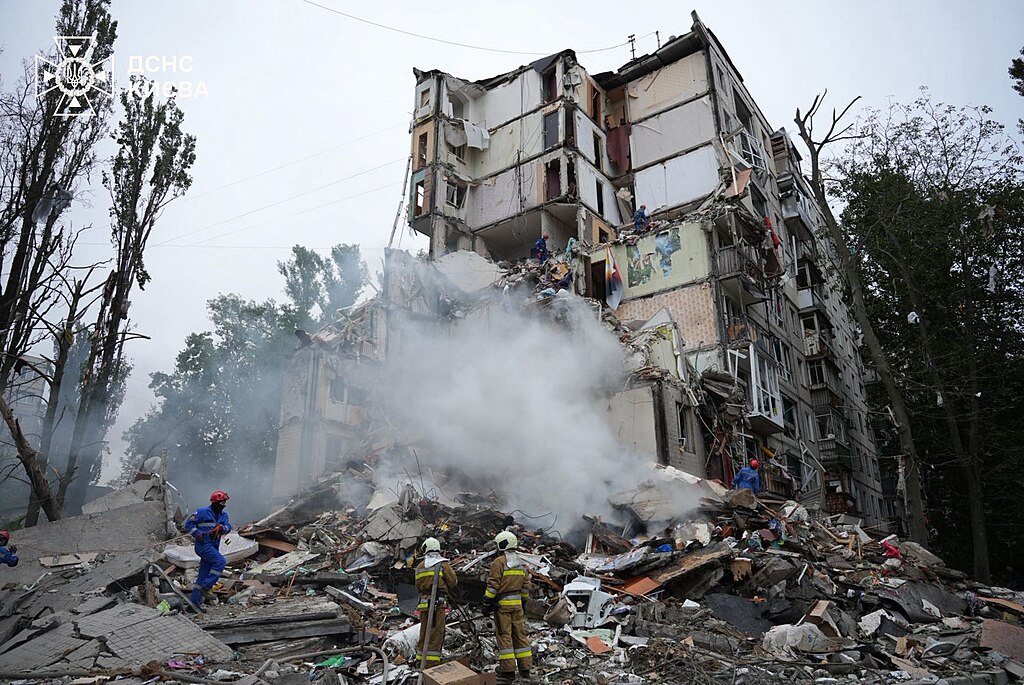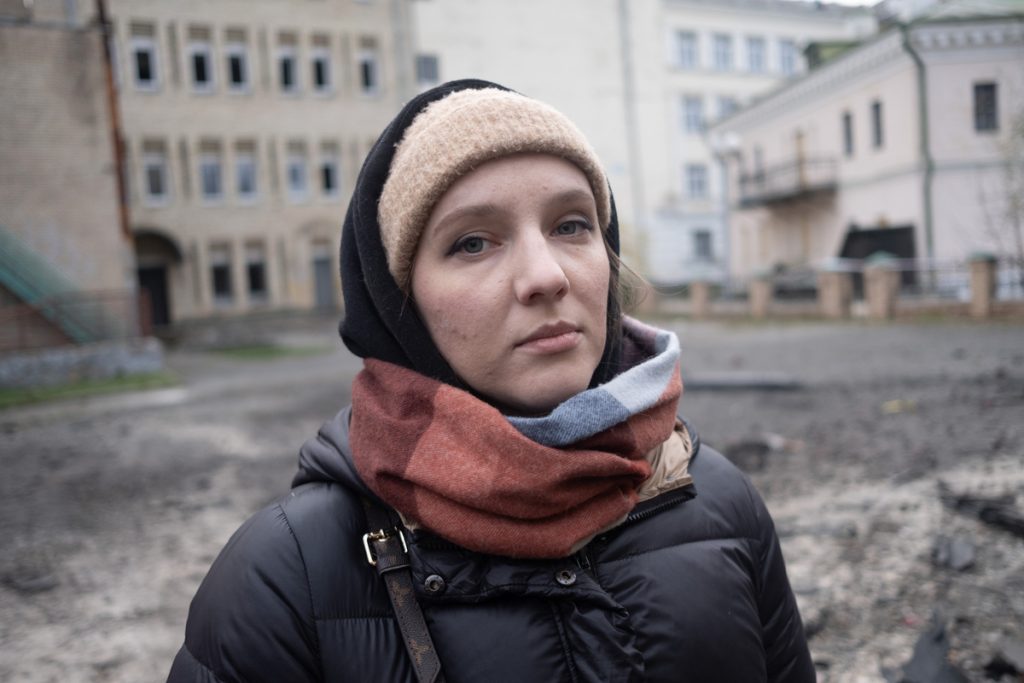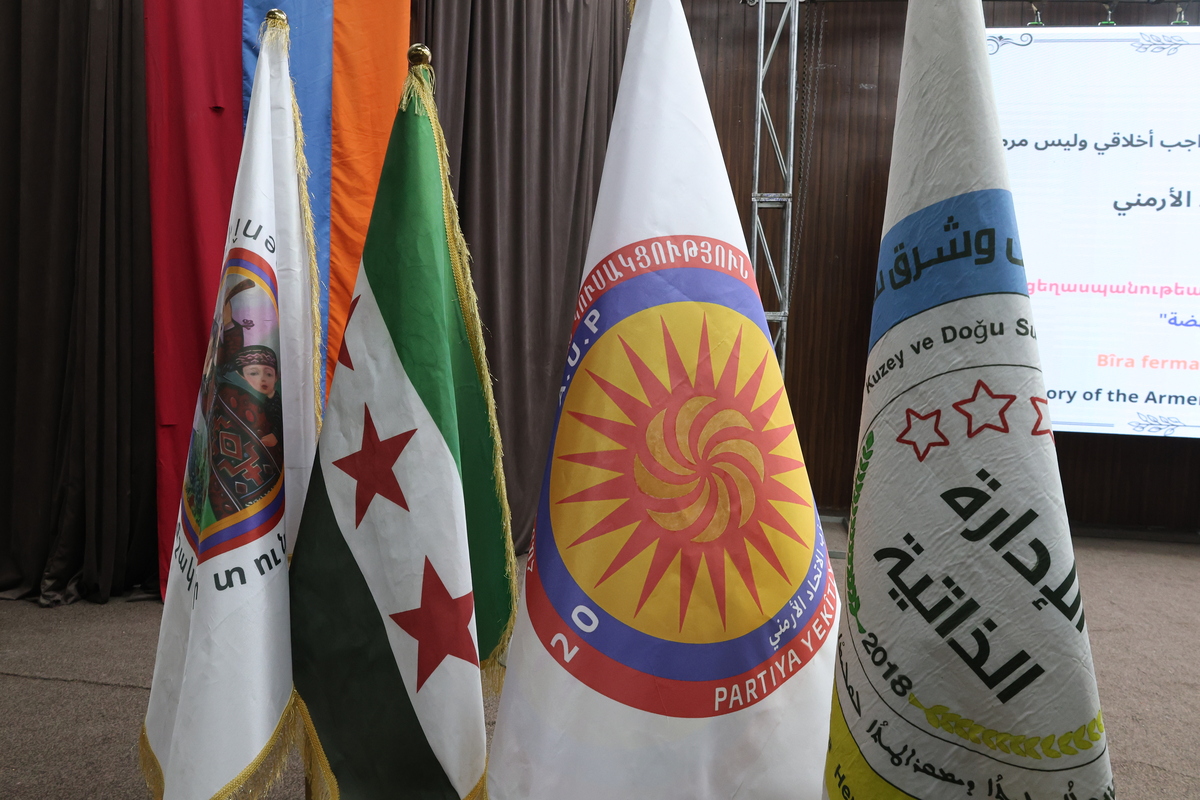In Kyiv, Life Persists Between Blackouts and Air-Raid Sirens

Apartment building in Kyiv (Sviatoshyn District) after strike by cruise missile Iskander during Russian attack on the city in the night and morning of 31 July 2025. 32 people were killed and more than 159 injured
Apartment building in Kyiv (Sviatoshyn District) after strike by cruise missile Iskander during Russian attack on the city in the night and morning of 31 July 2025. 32 people were killed and more than 159 were injured | Photo Credits: State Emergency Service of Ukraine/Wikimedia Commons

Svitlana, 26, stands beside a crater carved into the middle of a quiet residential block in Kyiv. Every window of the apartment building behind her is blown out. On the balconies, residents tape plastic sheets where glass once was, the plastic snapping softly in the autumn wind.
Wrapped in a black winter coat, Svitlana looks stunned. Two nights earlier, a Shahed drone, Iranian-designed and now synonymous with Russia’s overnight strikes, struck the neighborhood.
“I’m still in shock,” she said. “I can’t believe it happened at all.”

Her apartment lies only a hundred meters from the impact site. The drone landed in the parking lot. No one was killed, though shards of glass injured several residents.
Scenes like this have become familiar across the capital as Russia steps up its missile and drone assaults. Nearby, two men in orange utility suits sift through the wreckage, collecting fragments for investigators. “People are scared for their own lives,” says Svitlana. “No one asked me how I’m doing. I feel alone.”
“I watched 20 Days in Mariupol and thought I was ready…But you can’t be ready for this.”
She cannot leave Ukraine. Her mother is disabled, and her father recently underwent surgery. “I watched 20 Days in Mariupol and thought I was ready,” she said, “But you can’t be ready for this.” An architect by training, she now works part-time in an art gallery.
A few blocks away, life resumes. Cafés are open; a pair of men coax a small generator to life outside one. After a missile strike hit a nearby power station, electricity has been rationed, and entire neighborhoods fall dark at night. Generators have become a characteristic sound in Kyiv.

The sound recalls other cities that learned to live without light — Baghdad, Aleppo, Beirut.
Later that night, a friend invites me to dinner in Podil, one of Kyiv’s lively, bohemian neighborhoods. I climb the stairs of an old building with the help of my phone’s flashlight; the hallway is pitch black. Inside, a long wooden table glows with candles and plates of bread and fruit. Several people join us to share the Friday meal.

“We must enjoy life,” the host says, raising her glass. “You never know what will happen tomorrow.”
Their laughter fills the darkened room. Music plays softly. Beside me sits Dima, 24, from Mariupol, the southern city that endured some of the war’s worst devastation.
He recalls the days before the full-scale invasion. On 21 February 2022, his grandfather died. He left Kyiv to attend the funeral in Mariupol. “The city felt heavy,” he said. “Everyone sensed something was coming.” He persuaded his mother to return with him to Kyiv the next day. Two days later, Russia invaded.
“I was lucky,” he said. “I saw my city one last time. Every street, every building. I remember them all.”
When we step outside, rain falls steadily. Moments later, the air-raid sirens wail again, a haunting, familiar sound.
In the morning, officials reported that missiles and drones had hit infrastructure sites on Kyiv’s outskirts, killing at least two civilians.
The exact toll remains undisclosed, though Western estimates suggest hundreds of thousands of Ukrainian soldiers have been killed or wounded.
This is my seventh trip to Ukraine since the invasion began. Each visit, the city feels changed. Today Kyiv is fuller, more alive: traffic jams, new cafés, brand-new cars on the streets. Yet reminders of war are everywhere, from billboards featuring military imagery to posters urging men to enlist.
The government is struggling to replenish its ranks after nearly four years of fighting. The exact toll remains undisclosed, though Western estimates suggest hundreds of thousands of Ukrainian soldiers have been killed or wounded. Ukrainian President Volodymyr Zelensky is pleading for more aid and weapons, while Russian President Vladimir Putin warns of “serious retaliation” after Washington approved the use of long-range missiles from Ukraine.
Still, on a clear afternoon, it is possible to forget the war until the sirens start again.
Near Independence Square, known as Maidan, rows of photographs of fallen soldiers line the sidewalks, each draped with blue-and-yellow flags and, occasionally, those representing volunteers.
On a nearby corner, a flower vendor stands in the chill, her stall bursting with tulips and roses. She arranges the bouquets, waiting for customers. Even now, Ukrainians keep buying flowers stubbornly as if beauty itself were an act of defiance.
Soran Ibrahim
Soran Ibrahim is a Kurdish journalist and documentary filmmaker exploring the human cost of conflict in the Middle East and Ukraine.



